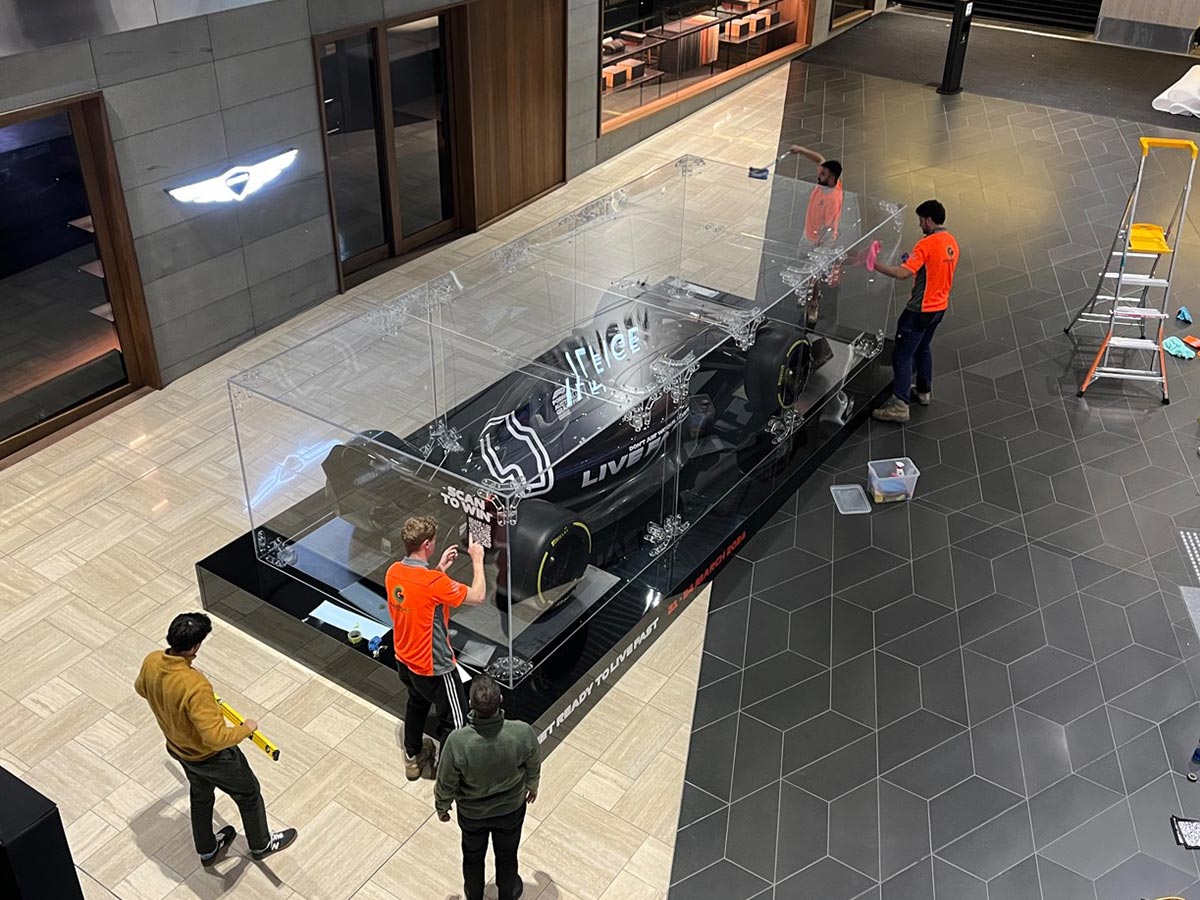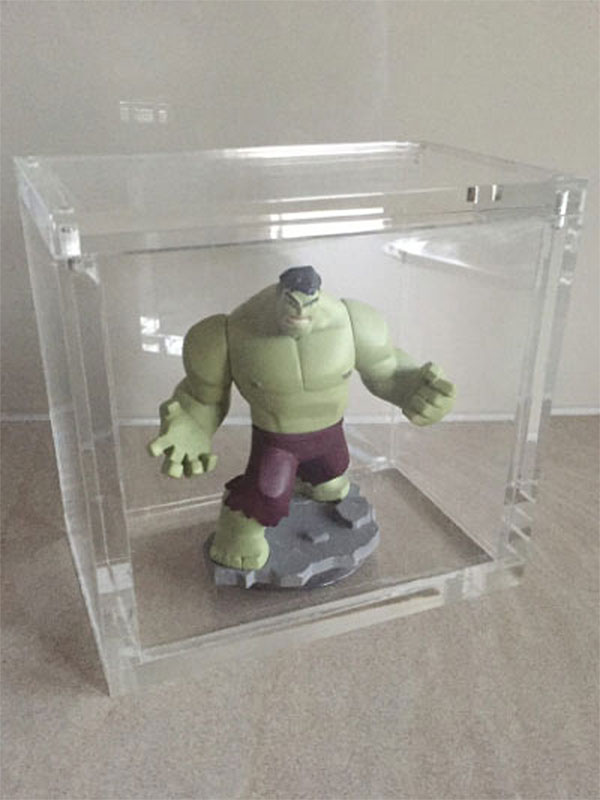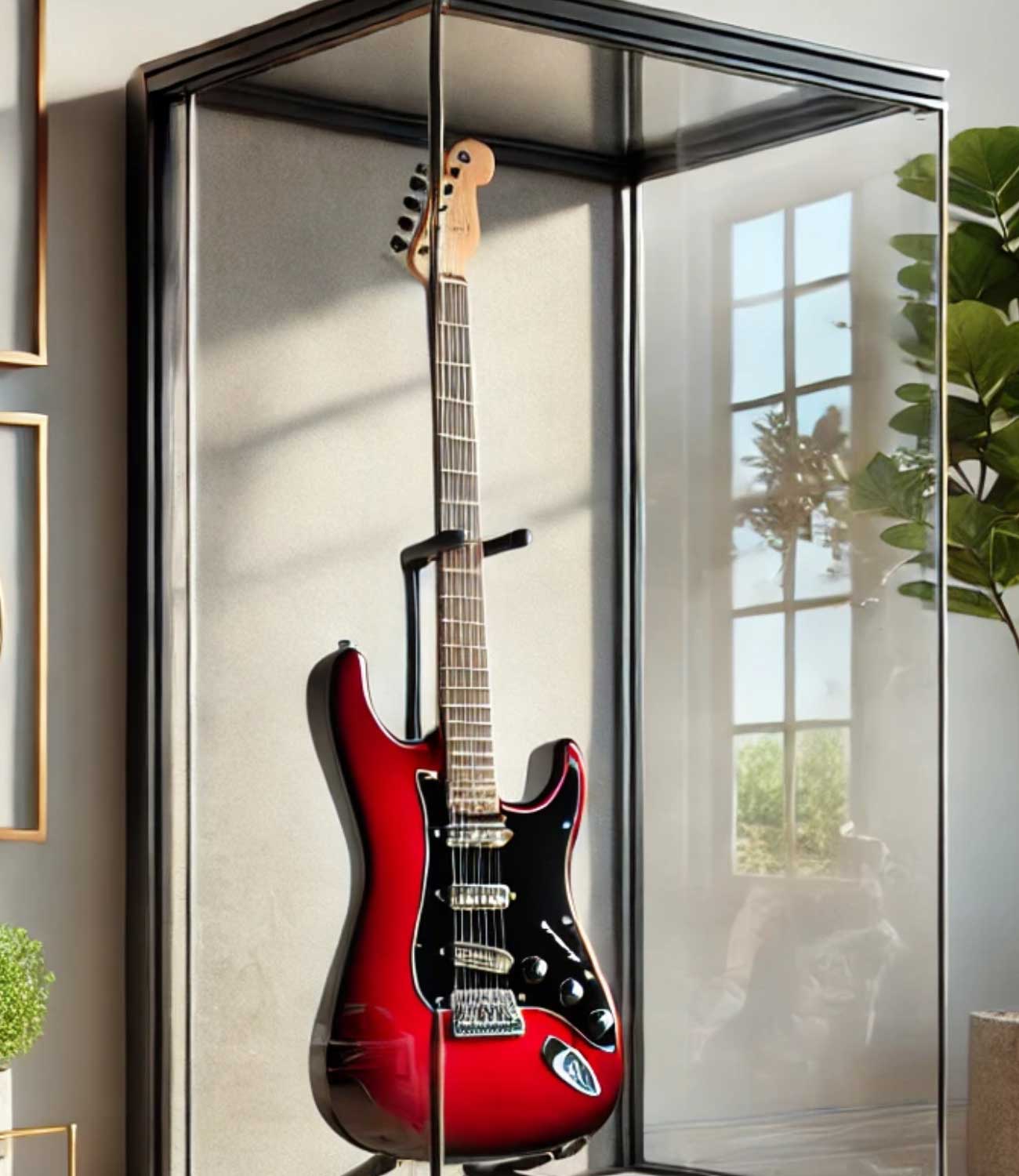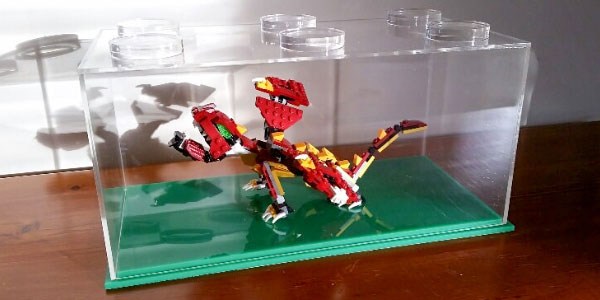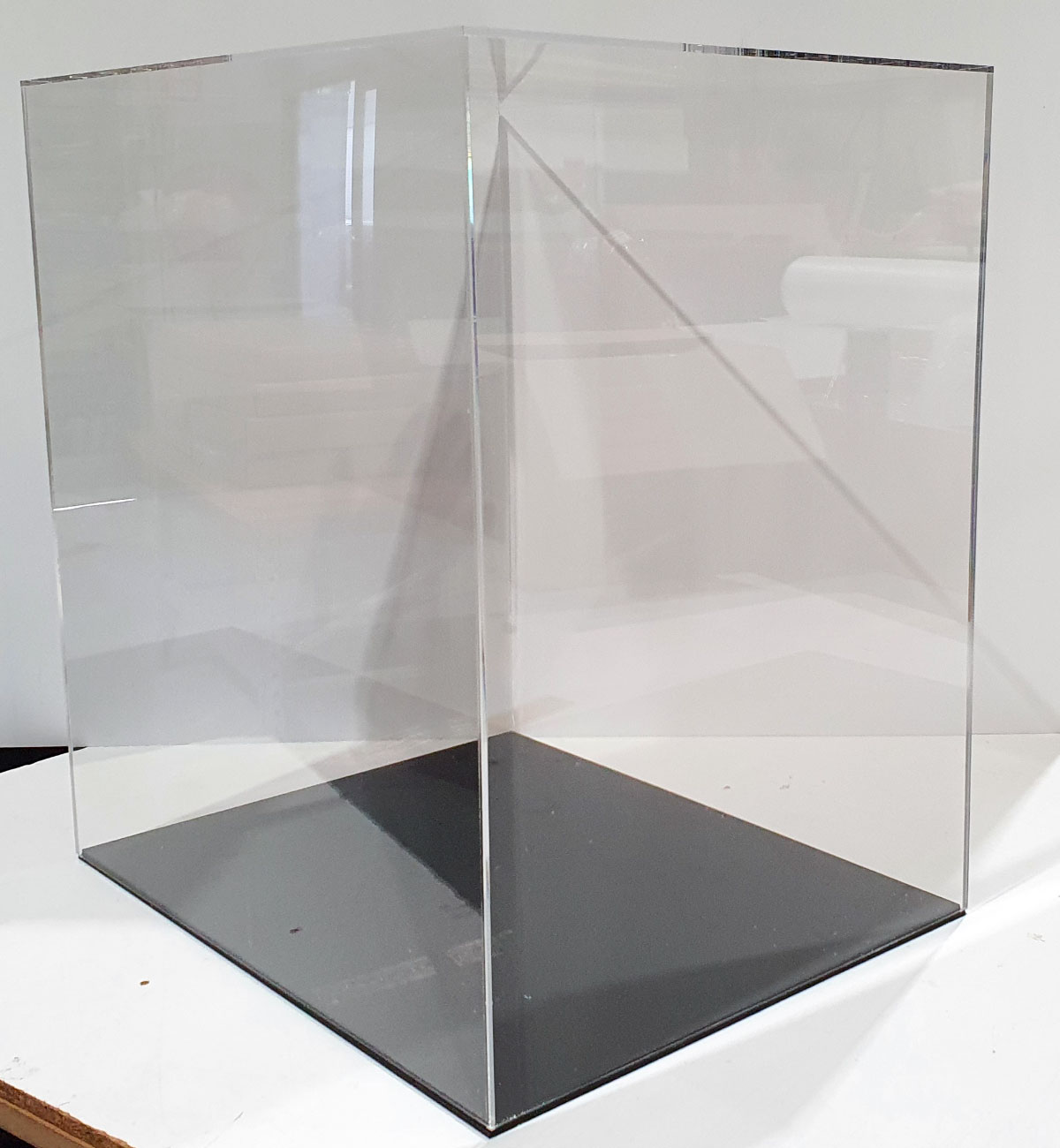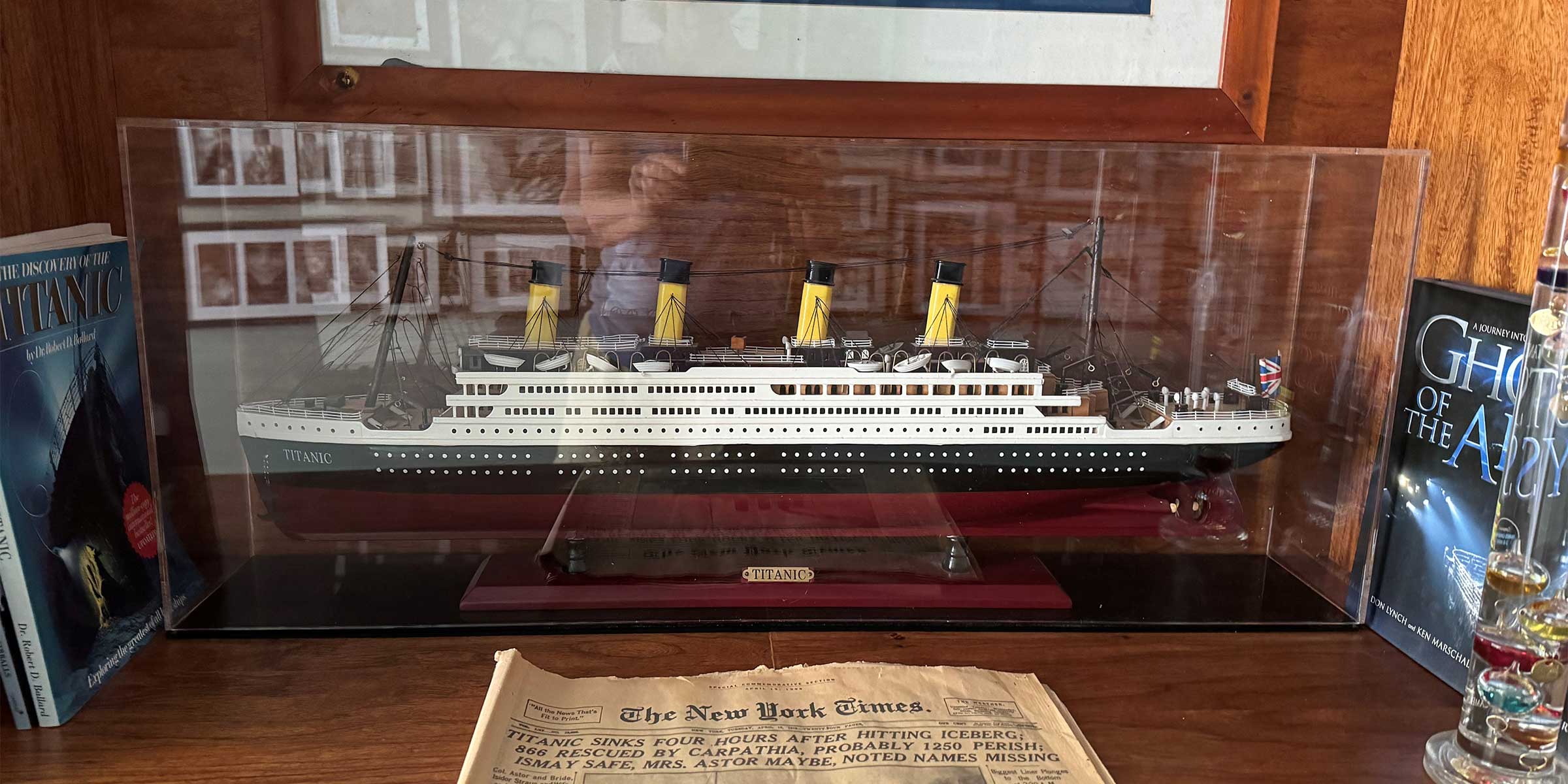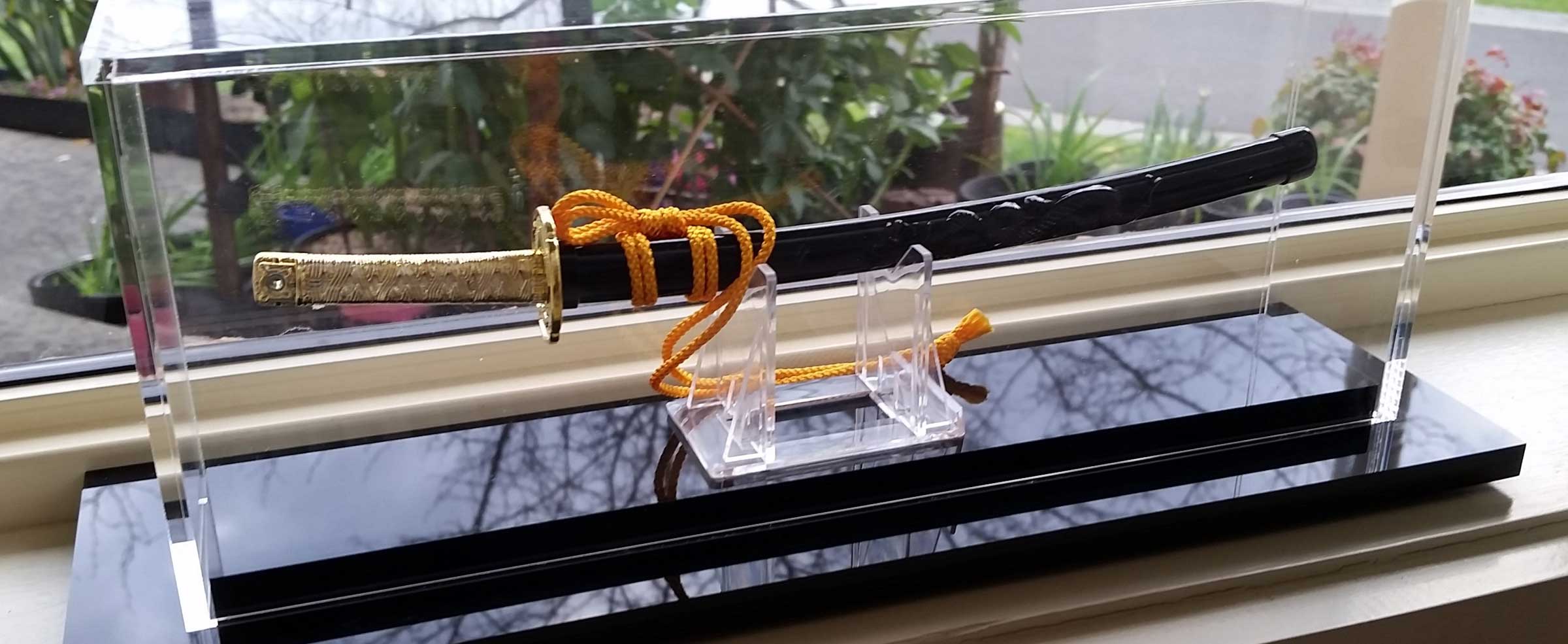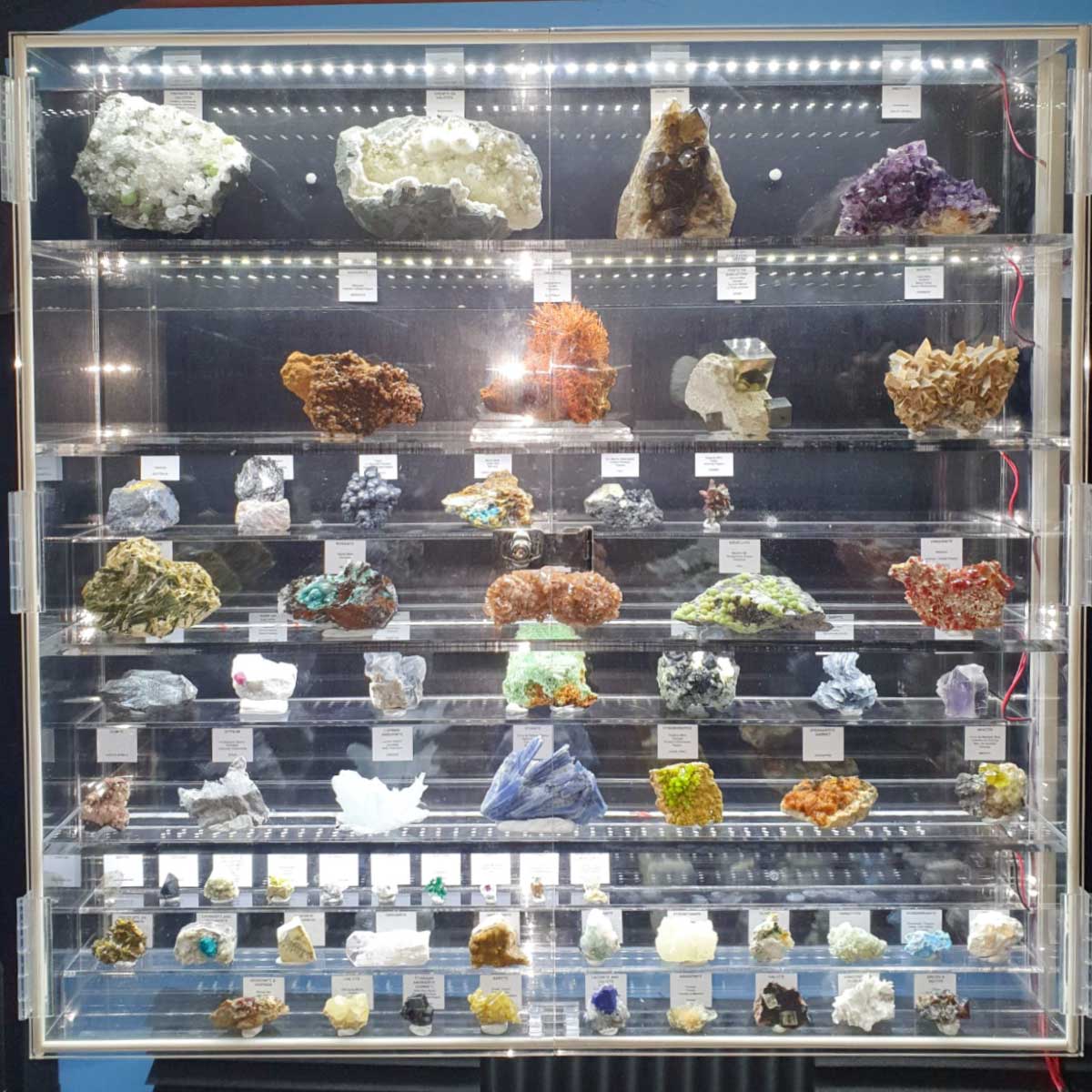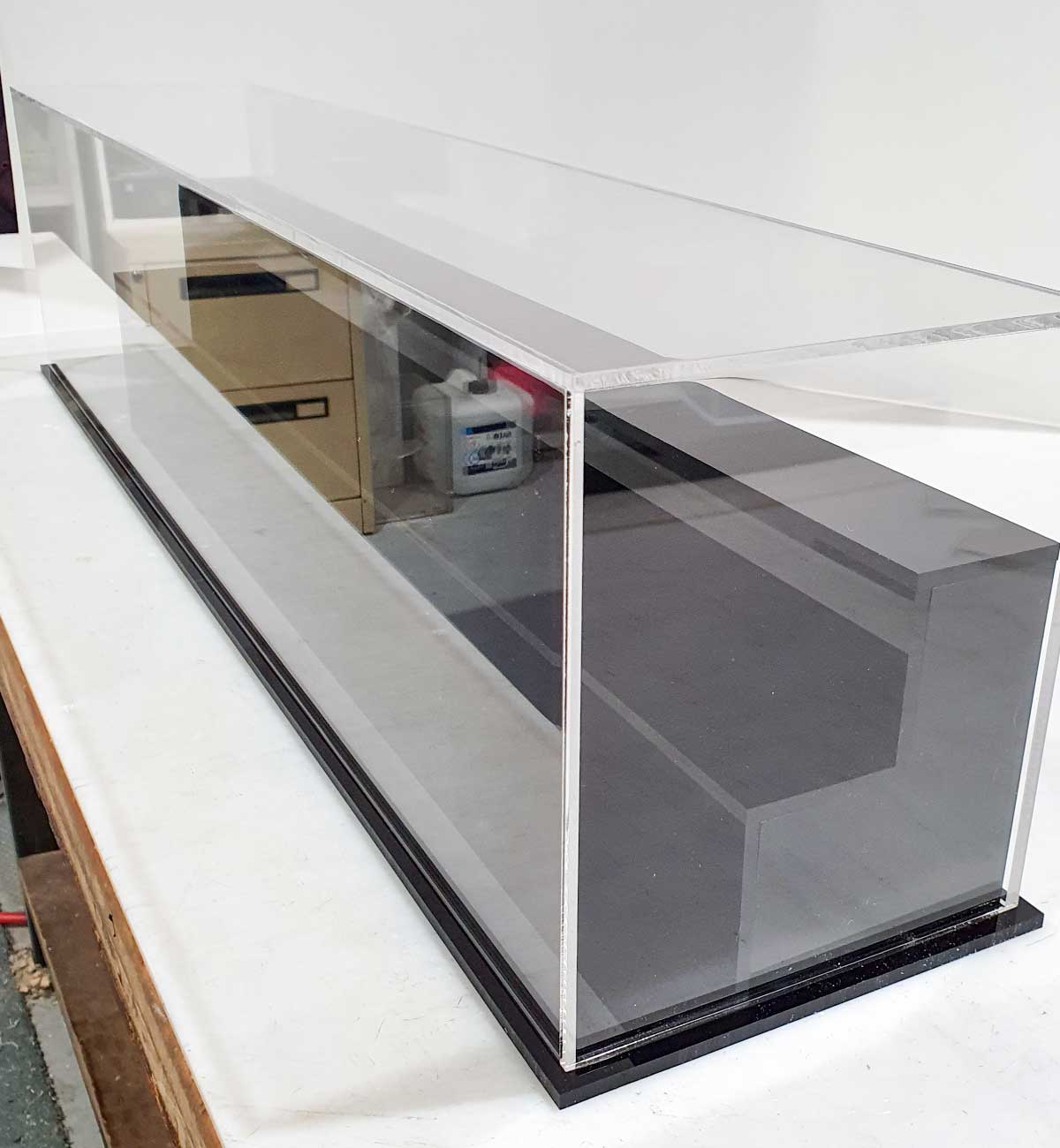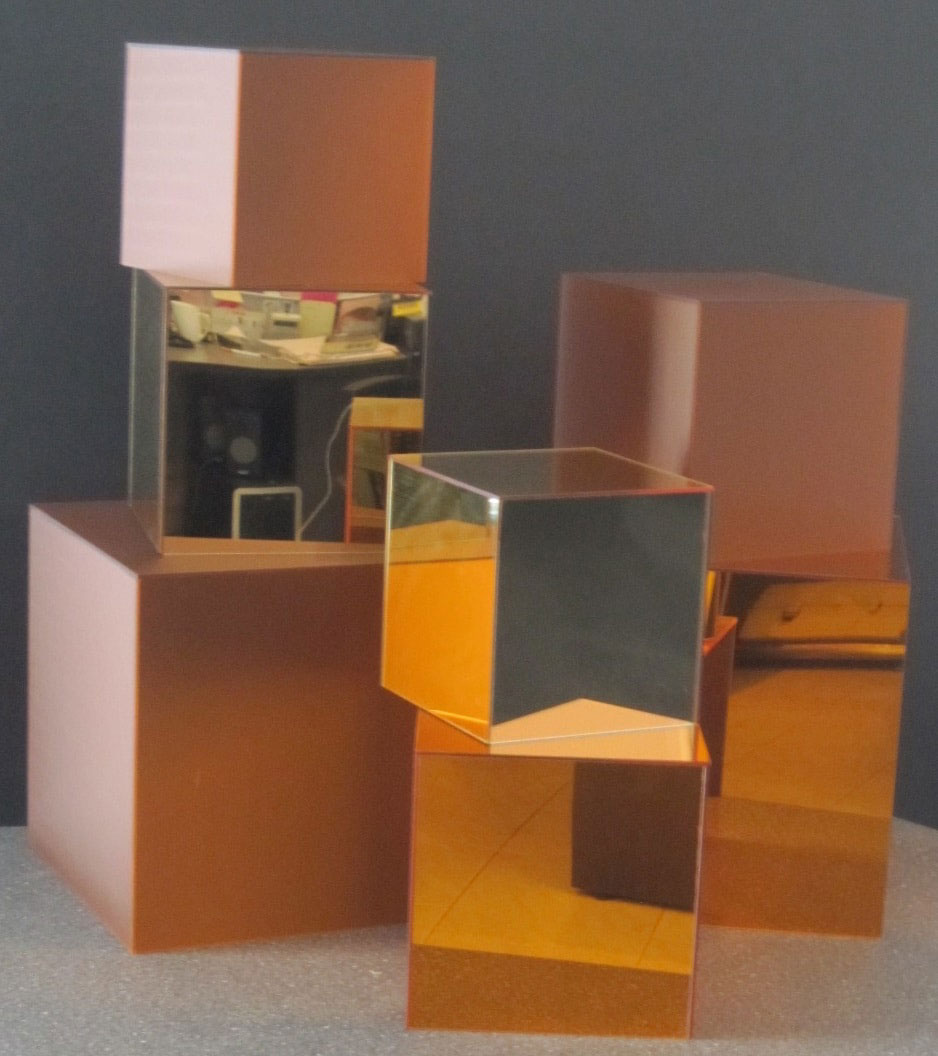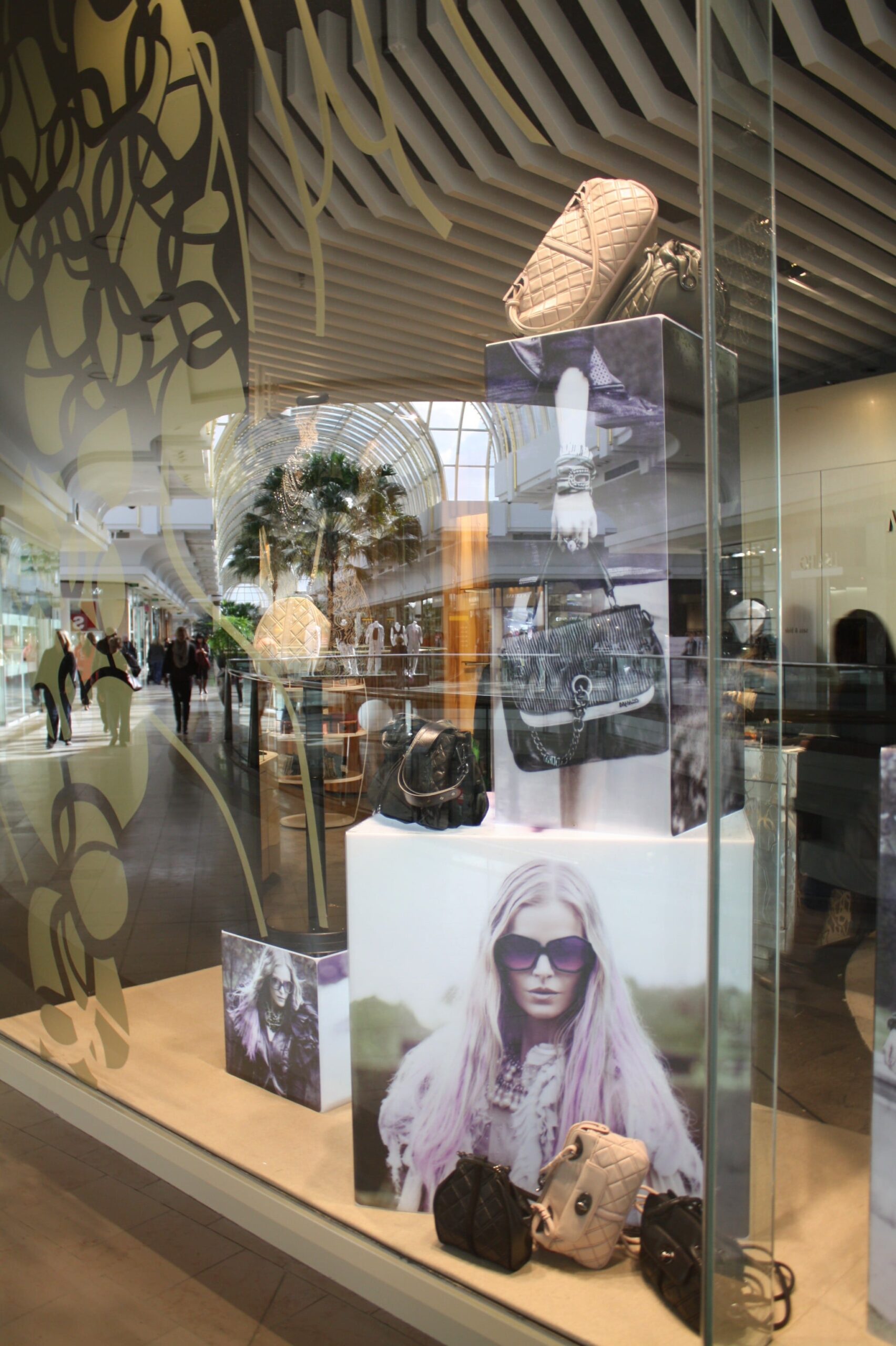Over the years, we’ve worked with collectors, interior designers, homeowners, businesses, retailers, and exhibition designers to create custom display cases that not only protect valuable items but also showcase them at their best.
Whether you’re displaying scale models, sports memorabilia, luxury items, collectable miniatures, objet d’art, awards, architectural dioramas, or retail products, a well-designed display case can make all the difference. We’ve even made display cases for racing cars!
With thousands of custom cases built, we’ve seen firsthand what works, what doesn’t, and the common mistakes people make when designing their display cases. Whether you’re a collector, a business owner, setting up an exhibition, or simply looking to showcase a much-loved piece in your home, this guide will walk you through everything you need to know to create the perfect display.
Should You Choose a Ready-Made or Custom Display Case?
When deciding whether to buy an off-the-shelf display case or invest in a custom-made design, here are a few things to consider:
- Perfect Fit: A well-designed display case ensures your item has the right amount of breathing room. An off-the-shelf case might make your piece look cramped or lost in an oversized void. Getting the proportions right enhances the overall presentation and impact of your display.
- Protection: Will your display be exposed to direct sunlight? If so, UV-resistant materials will be essential to prevent fading. Do you need locks for security? Will the case need to be secured to a benchtop or floor for stability?
- Aesthetic Appeal: When you design a case to fit your piece, you can match materials not just to the object but also to its surroundings. Pre-built cases tend to be generic with limited options and often made to a price point. Lower-quality materials and construction could cheapen the look of your display.
- Presentation Enhancements:
- A solid-coloured, mirrored, or printed backdrop can highlight key features
- The right lighting can add emphasis and highlight details
- Choosing a dark, light, or timber base can complement both the object and its environment
- Plinths, pedestals, or props can elevate your display and create a focal point
Custom Display Cases
- Tailored to your object
- Wide range of materials
- Locking options available
- Designed to match decor
- Built for durability
Off-the-Shelf Cases
- Limited sizes
- Standard options
- Usually unsecured
- Generic designs
- Mass-produced quality
As you can see, there’s a lot to think about when designing a display case. If you’re unsure where to start, get in touch—we’re happy to help you design the perfect case for your needs.
Your Display Case is More Than Just a Box
There is so much more to designing a case than just “fitting the object in a box.”
The right display case balances presentation, protection, and the finer details that elevate your piece.
Key Considerations When Designing Your Display Case
If you’ve decided that a custom-built display case is the right choice, it’s time to focus on the details that will bring your vision to life. With every case we craft, we see the impact that thoughtful design can have—from enhancing presentation to ensuring long-term protection.
From size and materials to positioning and lighting, here’s what we recommend you consider when designing a display case that truly showcases and protects your piece.
1. Size & Proportion
When designing a case, the size of your object is the starting point, but the right amount of clearance is what makes the difference—ensuring the display is balanced, protected, and allows for any additional elements.
- Breathing room around the object – Too tight, and the display looks cramped. Too much space, and the object can feel lost. Balancing proportions is key to a stand-out presentation.
- Space for accessories – Consider room for plaques, product descriptions, or additional elements that enhance the display.
- Room for future expansion – If your collection grows, will pieces be displayed together in one case or housed in individual cases? Planning ahead ensures a seamless presentation.
Check out our helpful guide on sizing your custom case perfectly.
2. Placement & Positioning
Where will your display case be positioned? Just like proportioning the case to the object, it’s important to consider how it fits within its environment.
- Desktop/Tabletop Displays – Perfect for items like architectural models, Lego Set builds (Dioramas, Bignettes, Vignettes, UCSs, MOCs), action figures, books, art & sculptures, and medium scale model cars. Make sure there’s enough space around the case so it doesn’t feel crowded, and avoid placing it too close to the edge where it could be knocked over.
- Freestanding/Floor Cases – Ideal for larger displays like musical instruments, trophies, costumes, large dolls, or retail products. Stability is key—consider weight distribution and a sturdy base to prevent tipping.
- Wall-Mounted Displays – Great for sports & music memorabilia, framed collections, mineral collections, collections of small object (such as matchbox cars), awards, and medals. Pay attention to how far the case extends from the wall and whether nearby furniture could impact visibility or create obstacles for foot traffic.
Of course there are many ways of displaying objects and you can choose any of these display formats – it depends on your preferred aesthetic, space and budget.
3. Form & Function
A great display case isn’t just about looks—it should complement the object inside while enhancing its function and presence. The shape you choose impacts how your item is viewed, protected, and integrated into its space. Here’s how to make the right choice:
- Rectangular or square cases – The most versatile and cost-effective option, these cases suit everything from personal collections to commercial displays. Ideal for Lego set builds, scale models, family heirlooms, and counter-top retail displays, their structured design makes them easy to arrange in homes, offices, or shop spaces. Their simple, clean lines provide maximum visibility while being budget-friendly, making them the go-to choice for most display needs.
- Hexagonal or octagonal cases – A striking choice for statement displays, these cases offer a multi-angle viewing experience. They are particularly suited for period and historical pieces, large single crystal displays, and museum exhibits, where the light refraction from the angled panels enhances reflections and visibility. Typically taller in design, they are often used for large-scale builds, where the additional craftsmanship and cost are offset by the sheer presence of the display.
- Round cases – Designed for delicate or high-impact visual displays, these cases allow for 360-degree viewing with a soft, uninterrupted presentation. Popular for preserved wedding bouquets, fine jewellery, and hospitality applications like cake displays, they add a luxurious, gallery-style aesthetic. They are also ideal for “underwater” themed displays—such as watches, cameras, pumps, and filtration equipment—where a sealed, high-clarity enclosure is essential for showcasing functionality and effects.
If you’re unsure which shape best complements your piece and space. We can guide you through all the options to find the perfect fit for both aesthetics and function – and stay within your budget.
4. Material Choices
The materials used in your display case play a huge role in durability, weight, security, and aesthetics. Whether you’re debating between glass vs acrylic, considering a solid base material, or exploring custom backdrops, choosing the right combination of materials ensures that your display is both functional and visually stunning.
- Acrylic vs. Glass
- Acrylic – The preferred choice for most applications – it’s lightweight, impact-resistant, and offers better colour clarity than standard glass, making it ideal for clear, unobstructed displays.
- Glass – Offers a classic, high-end look but is heavier and more fragile. It’s best suited for smaller, high-security displays, such as museum artefacts and fine jewellery collections
- Bases
- Timber – Ideal for heritage pieces, luxury displays, and warm, classic aesthetics
- Acrylic – Minimalist & modern, blending seamlessly into contemporary spaces
- Metal – Used in larger builds for added strength and durability or an ultra-modern feel
- Backdrops (integrated or inserted)
- Acrylic – Comes in a wide range of finishes, including clear, frosted, coloured (gloss or matte), mirrored, translucent, and even glitter
- Timber – Provides more texture and depth than acrylic, offering a natural, warm look
- Printed – Logos, artwork, or textures can be printed directly onto acrylic to create a branded or themed display
If you’re unsure which option is right for you, we’re happy to help you choose the best fit.
5. Security & Protection
For high-value items, delicate pieces, or regulated collections (e.g., firearms, rare artefacts, signed memorabilia), security isn’t just about keeping your display intact—it’s about peace of mind. Whether you’re safeguarding a priceless collectable, protecting a fragile heirloom, or ensuring compliance with regulations, here’s what to consider:
- Locking Mechanisms
Adding locks can help prevent unauthorised access to your display. Options include:
-
- Cam locks – A discreet but effective way to secure your case
- Sliding bolt locks – Used for larger cases requiring added security
- Keyed or digital locks – Often required for regulated items (e.g., collectable firearms)
- Dust & Tamper Protection
A well-sealed display case keeps your items free from dust, fingerprints, and accidental damage.
-
- Sealed acrylic panels – Reduce dust build-up and prevent airborne contaminants from affecting fragile pieces
- Tamper-proof enclosures – For high-traffic areas, such as museums, galleries, or retail spaces, a secure, sealed case prevents interference
- Wall & Floor Mounting
For large and tall cases or regulated displays, securing your case to a wall, countertop, or floor can prevent tipping, theft, or unwanted movement.
-
- Fixed mounts – Required for some regulations, especially for weapon displays
- Weighted bases – Add stability to freestanding displays while maintaining flexibility for repositioning
Not sure which security features are right for your display? Our team can recommend solutions tailored to your specific needs and give you peace of mind.
6. Lighting
Choosing the right lighting ensures your display is well-lit without causing damage to delicate materials.
- LED Spotlights – Ideal for focused illumination, perfect for highlighting specific details on objects like jewellery, sculptures, or rare artefacts
- Edge-Lit Panels – A sleek, modern way to create even illumination across the display without harsh shadows
- UV-Filtered LEDs – Protect sensitive items (e.g., signed memorabilia, historical documents) from fading over time
Don’t overlook the colour of your lighting – it can make a huge difference to your display
- Daylight (5000-6500K) – The most versatile and natural-looking lighting, ideal for most displays, as it offers true-to-life colour rendering without distorting tones. Recommended for art pieces, museum artefacts, sports memorabilia, and product displays
- Warm light (2700-3500K) – Enhances the richness of wood, vintage displays, and heritage pieces by giving them a soft, inviting glow
- Cool light (4000-5000K) – Best for crystal & mineral displays, technological products, luxury watches, and high-contrast modern presentations, where sharper light improves clarity and detail
With the right lighting, your display can go from ordinary to extraordinary. If you need guidance on selecting the best lighting for your case, we’re happy to help.
7. Accessories
Adding accessories can elevate the look and functionality of your display, ensuring that your piece is presented in the best possible way.
- Custom Stands & Risers – Provide added depth and dimension, perfect for multi-piece displays, books, figurines, trophies, and layered arrangements
- Plinths & Pedestals – Ideal for museum pieces, sculptures, and high-end retail displays, offering a clean, elevated presentation
- Plaques & Labels – Laser-engraved title or descriptive information can add context, storytelling, or branding
- Turntables & Rotating Bases – Great for 360-degree viewing, often used for model cars, fine jewellery, or high-detail collectables
- Dust Seals – For delicate or intricate pieces that require extra protection from dust and environmental factors
A well-designed display isn’t just about the case – it’s about the entire presentation. Small additions such as those mentioned above can add depth, context, and character, ensuring your item is showcased at its very best.
8. Branding & Customisation for Businesses
For businesses, museums, and retail environments, adding branded elements to a display can reinforce messaging and attract attention.
- Company logos – Integrated into the base or backdrop for a polished, professional touch
- Custom colour schemes – Aligning materials and lighting with brand aesthetics
- Interactive elements – QR codes linking to product details, artist bios, or historical context
Looking to create a display that not only protects but also promotes your brand? We’ll help design a custom case that aligns with your branding, location, and presentation needs.
Why Work With Kayendee?
With decades of experience in acrylic fabrication, Kayendee has designed and built everything from elegant desktop display cases to large-scale retail and exhibition enclosures.
Every case is crafted with precision, high-quality materials, and an expert eye for presentation. Whether you need a one-of-a-kind showcase for your home, business, or collection, our team can bring your vision to life.
How to Get a Custom Display Case
- Submit a Quote Request – Tell us about your item and how you’d like to display it
- Consult with Our Team – We’ll refine the design, suggest enhancements, and ensure the perfect fit
- Precision Manufacturing – Our expert fabricators craft your case with care and attention to detail
- Pickup or Delivered to Your Door – Securely packaged and ready for easy installation
